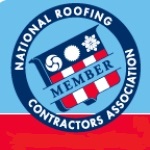Hicksville Roofing: Article About Replacing Asphalt Roof Shingles
This is the thin layer of material between your roof supports and your shingles. Roofing membrane can be made out of bitumen, synthesized rubber or any other number of polymers. It is designed to prevent leaks on rooftops and can be used on flat and pitched roofs.
Question answered for our Hicksville roofing customers: When is the time to replace my shingles?Asphalt shingles can last from 14-20 years if they are in good condition. If you have never fixed any part of your roof since you moved into the property, chances are good that the shingles will need to be replaced. When you notice that they are curling, ripped or are torn in several places, then you should put in new shingles straight away. Leaving the membrane exposed to the elements can have disastrous results.

The roof over your head takes a lot of abuse from the wind, rain, snow and sun. It works hard to keep you dry and comfortable all year round. Your shingles are your home's first line of defense against the weather outside. It stands to reason that they will need to be replaced every now and again. However, instead of hiring a roofing contractor, you can replace your shingles on your own and save quite a bit of money in the long run. Whether you need to replace just a few shingles or a hundred, you can find personal satisfaction in a job well done when you fix your own Hicksville roofing. Here's how to get started.
Before you even begin, you should focus on safety. Never work on your roof alone. Have a friend or partner work along with you in case of an emergency. Next, you'll need to nail in a long wooden board around the bottom edge of your roof. You can't put your weight on this board, but you can rest your feet on it as you move around the upper parts of your rooftop while you replace shingles. Keeping yourself stable while you work is the best defense against an accident.
Have a question regarding siding repairs or roof inspections? Ask Long Island Roofing of Hicksville NY.
Now that you are secure and have gotten up onto the roof, you can begin getting rid of damaged shingles. Take a hammer and use the claw end to pry the shingles away from the roofing membrane. If this membrane is torn or damaged, you will need to remove that along with the staples and nails that were used to hold the old shingles in place.
Next, you can carefully patch in the membrane over the bald spots on your roof. Follow up with the new shingles, which you can nail or staple into place over the membrane itself. Start at the bottom of your rooftop and work your way up. Make sure that your shingles are all the exact same shape and size, and that they overlap each other as you go up further on the roof. This will provide the seal you need against rain, snow and ice.
If you get stuck or are confused, there's nothing wrong with contacting a roofing professional. He or she will be able to give you advice that is tailored to your unique situation. Remember, asking for help now is far easier than asking for help later when your roof is leaking in the middle of a storm.
Working on your roof isn't an impossible task. With a bit of effort and a lot of measuring, you can replace your own shingles and keep your roof looking great for years to come.









